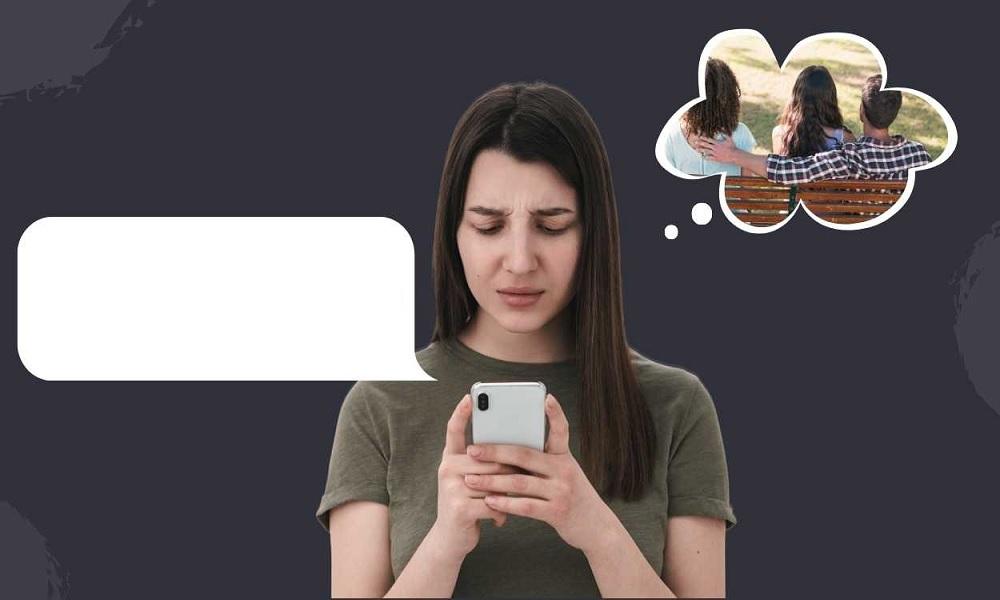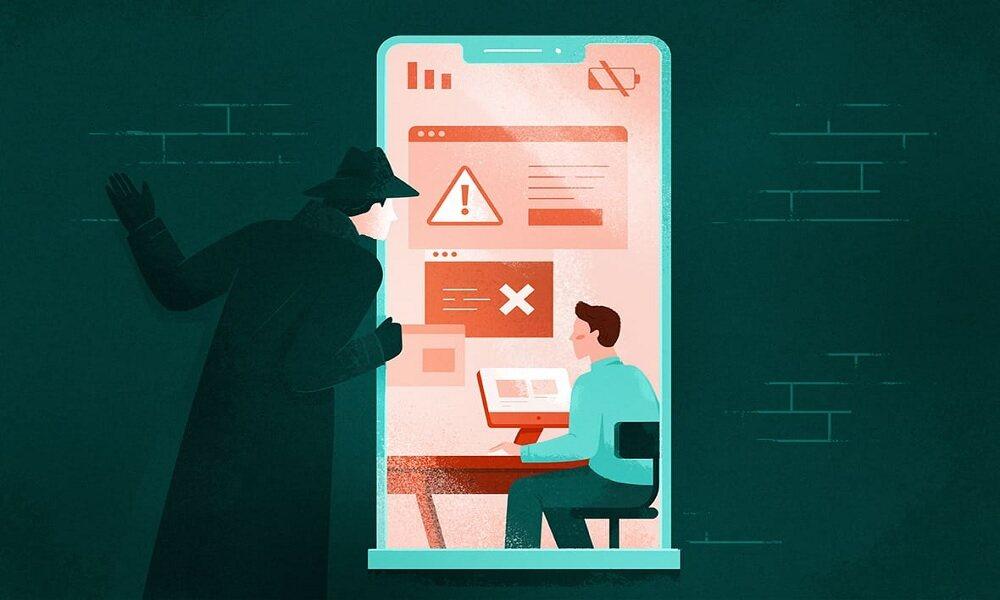How to Look on Someone's Phone: 6 Methods for Accessing Mobile Devices

Learning how to look on someone's phone has become increasingly relevant for parents, employers with company devices, and those with legitimate monitoring needs in specific relationships.

While privacy should always be respected, certain situations like parental supervision, company device management, or mutually agreed monitoring create legitimate contexts where understanding how to look at someone's phone becomes necessary for safety and security.
Understanding Phone Access and Monitoring
Before exploring specific methods for how to look on someone's phone, it's important to understand the technical and privacy frameworks involved in mobile device access.
Modern smartphones implement various security measures that create specific challenges for device monitoring:
- Lock screen security (PIN, pattern, password, biometrics)
- App-specific security features and encryption
- Account-level protections through cloud services
- Operating system privacy controls and permissions
- User notification systems for security events
These security layers create the technical context within which any attempt to access or monitor a phone must operate, whether through direct physical access or remote monitoring solutions.
Signs Someone Has Already Looked on Your Phone
Recognizing when someone has accessed your phone without permission involves identifying subtle changes and digital traces left behind by unauthorized access. Modern smartphones leave various indicators that can reveal if someone has been looking through your device without your knowledge.
Common signs include apps appearing in different positions than where you left them, recent apps showing unfamiliar activity, or browser history containing searches you didn't perform.
Battery drain patterns might change if monitoring software was installed, while data usage spikes could indicate information being transmitted to external servers.
More subtle indicators include changed notification settings, new apps you didn't install, or familiar apps behaving differently. Security features like two-factor authentication might send unexpected verification codes, or you might receive login notifications from services you haven't accessed.
Email accounts might show sent items you don't recognize, particularly if someone attempted to reset passwords or access linked accounts through your phone.
SafeMyKid - The Most Comprehensive Solution to Look on Someone's Phone
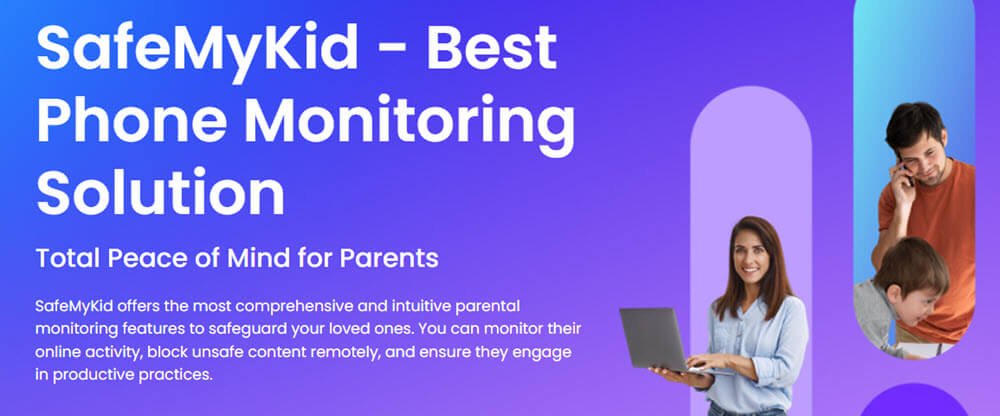
When you need a reliable method for how to look at someone's phone, SafeMyKid offers the most comprehensive monitoring solution through its advanced surveillance capabilities.
This powerful application provides complete visibility into phone activities without requiring constant physical access to the device.
SafeMyKid works discreetly to record all phone activities, from messages and calls to location data and app usage.
The application's sophisticated technology makes it particularly effective for parents monitoring children, employers overseeing company devices, or others with legitimate monitoring needs.
Key Features of SafeMyKid to Look on Someone's Phone
When it comes to how to look at someone's phone, SafeMyKid offers advanced capabilities that make comprehensive monitoring both effective and convenient:
- Complete Message Access -View text messages, social media communications, and messaging app content across platforms.
- Call Monitoring- Access call logs, contact details, and call recordings for complete communication oversight.
- Location Tracking - Monitor real-time location with movement history and geofencing capabilities.
- Social Media Surveillance - Track activities across Instagram, Snapchat, Facebook, and other popular platforms.
- Browser History- View web browsing activity regardless of incognito mode or history deletion.
- App Monitoring- See which applications are being used, for how long, and what content is being accessed.
- Photo and Video Access - View media files stored on the device, including recently taken or received images.
- Remote Dashboard- Access all monitoring data from anywhere through a secure online control panel.
How to Set up SafeMyKid to Look on Someone's Phone
Setting up SafeMyKid for phone monitoring requires just a few straightforward steps to begin tracking all device activities.
Step 1. Create Your SafeMyKid Account
Visit the SafeMyKid website to register and create your monitoring account.
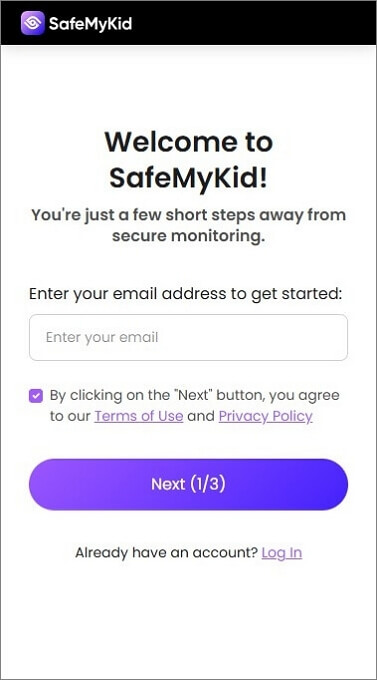
Step 2. Set up The SafeMyKid App
For Android: Install the SafeMyKid app directly on the target device (requires brief physical access). For iOS: Use iCloud credentials to enable monitoring without physical access to the device.
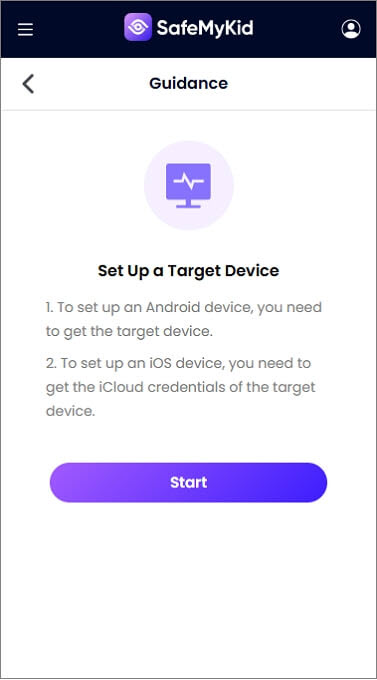
Step 3. Look on Someone's Phone Remotely
Access your secure dashboard to view complete phone activities, including messages, calls, location, and application usage.
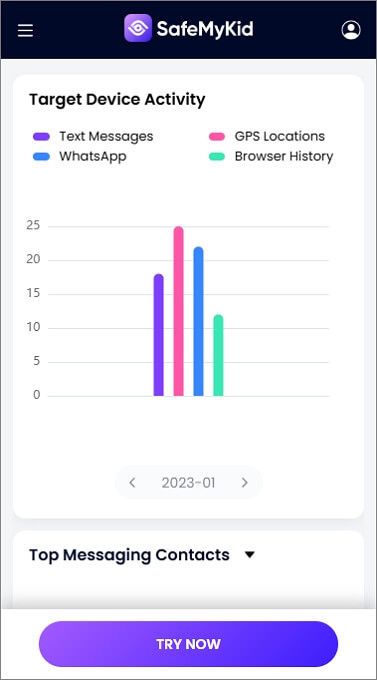
5 Other Methods to Look on Someone's Phone
While SafeMyKid offers the most comprehensive solution, several other approaches can help you access and monitor phone activities. Here's an overview of 5 additional effective methods.
1. Direct Physical Access

The most straightforward method for how to look at someone's phone involves having direct physical access to an unlocked device. This traditional approach provides immediate visibility into phone content without requiring specialized tools or software installation.
This direct method works best when you have the person's permission or parental authority, or when dealing with a company-owned device where monitoring policies are clearly established.
While simple in concept, this approach requires either an unlocked phone or knowledge of the security credentials to gain access.
Pros:
- No additional software or tools required
- Provides immediate access to all visible content
- Works across all phone types regardless of model
- Allows direct interaction with the device interface
Cons:
- Requires physical possession of the device
- Needs security credentials if the phone is locked
- Leaves evidence of access in the app's recents and history
2. Cloud Account Access
Many phones automatically back up data to cloud services like iCloud for iPhones or Google accounts for Android devices. Accessing these cloud accounts can provide visibility into phone content without needing the physical device.
This method requires having the cloud service credentials (Apple ID/password or Google account credentials) but can reveal extensive information, including photos, contacts, messages, notes, and sometimes location history.
The approach works particularly well for family members with shared accounts or situations where cloud credentials are known.
Pros:
- Works remotely without needing the physical device
- Provides access to backed-up content even if deleted from the phone
- Often includes extensive historical data
- Leaves no trace of monitoring on the actual device
Cons:
- Requires cloud service credentials
- Limited to content that's included in cloud backups
- May trigger account access notifications on the device
3. Family Sharing Features
Both Apple and Google offer family-sharing features that can provide legitimate access to certain aspects of another person's phone activity. These official features include location sharing, app usage monitoring, and in some cases, content management capabilities.
This approach utilizes officially supported family oversight features rather than third-party solutions.
For parents monitoring children in particular, these platform-level tools provide manufacturer-supported visibility into device usage within appropriate family contexts.
Pros:
- Officially supported by device manufacturers
- No additional software installation required
- Regular updates through system development
- Transparent monitoring that builds trust
Cons:
- Limited monitoring compared to specialized solutions
- The user is typically aware of the monitoring
- Varies significantly between iOS and Android platforms
4. Password Manager Access
If the target phone uses a password manager or stores login credentials in the browser, accessing these saved passwords can provide entry to various accounts and services linked to the device without needing the phone itself.
This method involves accessing the password storage system, either through a shared password manager account or by accessing browser-saved credentials on a shared computer. This can reveal access to email accounts, social media, and other services used on the phone.
Pros:
- Provides access to multiple connected accounts
- Works without needing the physical phone
- Can reveal extensive digital footprint information
- Often includes historical login information
Cons:
- Requires access to password manager or shared browser
- Limited to accounts with saved credentials
- May trigger security notifications to the phone
- Effectiveness depends on the user's password practices
5. Recovery of Deleted Content

Specialized data recovery tools can reveal content that has been deleted from a phone, providing access to communications or media that someone may have attempted to remove. These recovery solutions work by accessing data remnants that remain in device storage even after visible deletion.
This approach requires specialized software and typically needs physical access to the device. It's particularly useful in situations where there's concern about deliberately hidden communications or content that has been removed to prevent discovery.
Pros:
- Can reveal deliberately hidden or deleted content
- Works even after someone attempts to cover their tracks
- Often recovers photos, messages, and call records
- Provides historical data that are no longer visible on the device
Cons:
- Requires physical access to the unlocked device
- Success varies depending on the time since deletion
- More technical complexity than other methods
- May require specialized software purchases
Situations Where Looking on Someone's Phone May Be Appropriate
Understanding the legitimate contexts for accessing phone content helps ensure this capability is used responsibly:
- Parental Oversight - Parents monitor their minor children's device usage to ensure safety and appropriate content access.
- Business Management - Employers accessing company-provided phones to ensure appropriate business use and compliance with policies.
- Explicit Agreement - Relationships where mutual phone access has been explicitly agreed upon by both parties.
- Emergency Situations - Accessing a phone to obtain critical information during genuine emergencies when the owner is unavailable.
- Device Management - Assisting with technical support or setup on behalf of the device owner with their knowledge.
These legitimate scenarios highlight why understanding how to look at someone's phone serves important protective and oversight functions when used appropriately and legally.
Common Mistakes When Trying to Look on Someone's Phone
Many people make critical errors when attempting to access someone's phone, potentially exposing their monitoring activities or facing legal consequences.
The most frequent mistake is underestimating modern security features that track access attempts and send notifications to the device owner.
Another common error involves leaving digital footprints like changed app positions, browser history, or recent activity logs that reveal someone has been looking through the phone.
Technical mistakes include triggering two-factor authentication alerts, activating find-my-phone features, or inadvertently logging into accounts that send login notifications.
Additionally, many people fail to research legal requirements before attempting phone access, potentially violating privacy laws. Others rely on outdated methods that no longer work with current operating systems, wasting time and potentially alerting the phone owner.
Understanding these pitfalls helps avoid detection and ensures more effective monitoring when legitimate access is required.
Frequently Asked Questions about Looking on Someone's Phone
Here are answers to common questions about accessing and monitoring phone activities:
1. Is it possible to look on someone's phone remotely?
Yes, remote monitoring is possible through specialized applications like SafeMyKid or through cloud account access. These methods allow you to view phone content and activities without having physical possession of the device, though most require either initial setup on the phone or knowledge of cloud service credentials.
2. Is it legal to look on my child's phone?
Parents generally have legal rights to monitor their minor children's phone usage, though specific regulations vary by location. This parental authority typically allows for both direct device access and monitoring software installation for legitimate safety and supervision purposes.
3. Can someone tell if you've looked at their phone?
It depends on the method used. Direct physical access often leaves traces like changed app positions, recent app history, or browser history. Specialized monitoring solutions like SafeMyKid operate invisibly without detection, while cloud-based monitoring typically leaves no evidence on the device itself.
4. How can I look on someone's phone without touching it?
Remote monitoring solutions like SafeMyKid offer the ability to view phone content without physical access once initially set up. For iPhones, iCloud access can provide visibility into backed-up content without needing the device, while some network monitoring tools can track online activities without direct phone access.
5. What's the most reliable way to monitor a phone over time?
Dedicated monitoring applications like SafeMyKid provide the most comprehensive and reliable long-term phone monitoring. These solutions operate continuously in the background, capturing activities and content even when the phone isn't in your possession, unlike direct access methods that only provide occasional visibility.
Conclusion
Learning how to look on someone's phone involves understanding both the technical methods available and the important legal and ethical considerations that should guide their use.
While multiple approaches exist, from direct access to specialized applications like SafeMyKid, the appropriate choice depends on your specific situation and legal standing.


